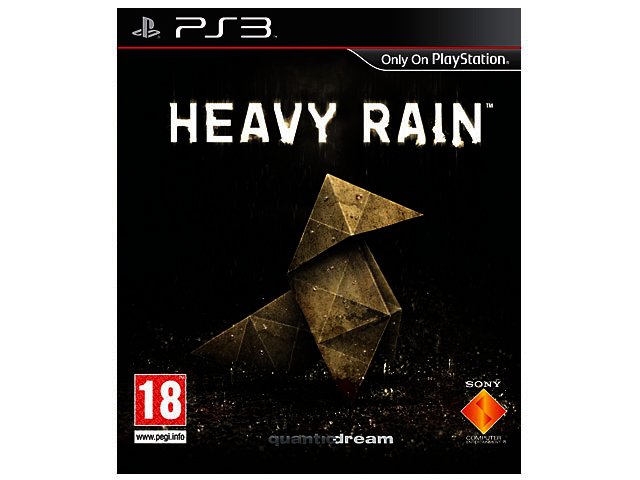Heavy Rain starts slowly, feeling more like a drama than a suspense game. You are well rewarded though with one of the best told stories in gaming we’ve ever encountered, if you’re patient enough to get into the story. The game’s greatest asset is that it is a story about people and what they are willing to do in the most stressful of circumstances.
The story
The story is intricately woven, focusing on four people desperately hunting for a serial killer- dubbed the Origami Killer due to his signature found at crime scenes- who murders young boys.
Heavy Rain sucks you into the emotional roller coaster each of the characters experiences. The one moment you are doing mundane things such as brushing a character’s teeth or using the toilet. The very next moment you are engaged in fighting off attackers or examining a crime scene. The combination of mundane and exciting is what causes you to emotionally invest in the characters though.
You find yourself willing the characters to succeed, not just so you ‘win’ the game, but in the same way you find yourself gripped by a character in a good book– almost as if the outcome of their cause really matters. Good voice acting and detailed character models only serve to intensify the effect.
The controls
Unlike many RPGs that depend heavily on quick time sequences that you either complete or fail, Heavy Rain is more organic. The plot simply marches on regardless if protagonists die or you are unable to follow the on-screen prompts correctly. This means that the story isn’t entirely linear, with the narrative simply branching off.
The control scheme is instrumental in keeping the game moving, it also supports the telling of the story rather well. You can interact with objects, or other characters in game, by following on-screen prompts to press face buttons and the right analog stick. You often have a choice to follow a certain course of action or to determine how your character interacts with others.
The controls also conceptually mimic the actions you perform in game, for instance basic tasks require basic button presses, while more complex tasks require a combination of button presses. Taking this a step further, when a character is nervous or frightened the button or text prompts on-screen are blurry and difficult to read – making it tough for you to choose your preferred option, thus adding tension to the game.
One disappointment on the control front is moving through the environments. To move about you use the R2 button to walk and the left analog to direct a character. This sounds rather basic, and it is, but it often felt akward and unresponsive.
The visual element
The game looks very impressive as well. Character models are detailed, especially facial expressions. The only area that is a let-down is the rather mechanical way characters walk and every so often poorly synced speech.
The presentation of environments is equally as good. Developers Quantic Dream really set the scene with every environment adding to the emotion relevant to the particular part of the story you’re in. Whether it’s a happy middle-class home or a seedy part of a city, the setting is always just right – with the oppressive rain ever present.
Conclusion
Heavy Rain isn’t a game that will appeal to everyone. There is no action on-tap, instead you get a suspense filled story that’s well told. It’s a very mature game in the themes that it explores and the depth of emotions that you experience. If you are willing to invest yourself, Heavy Rain turns into more than just another mindless game. We're not sure about its multiple play-through value though, something that has been heavily promoted, as only the ending differs while the plot remains the same.





